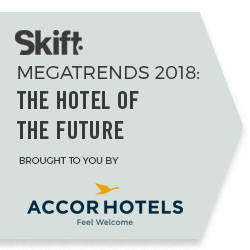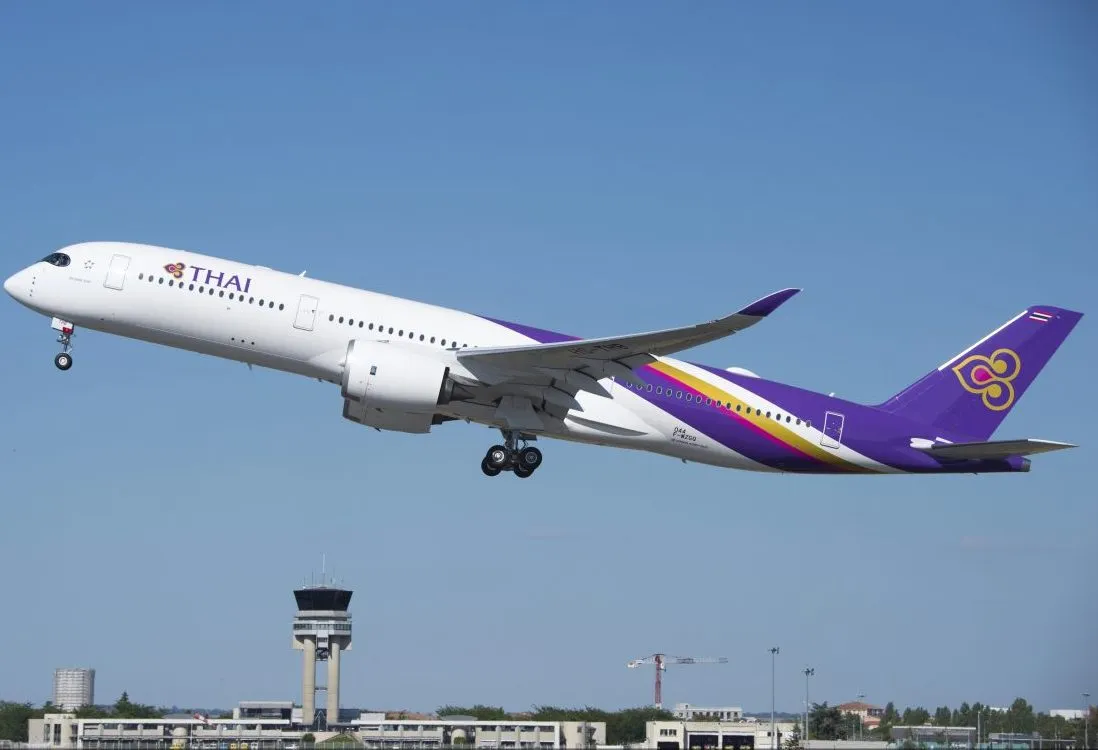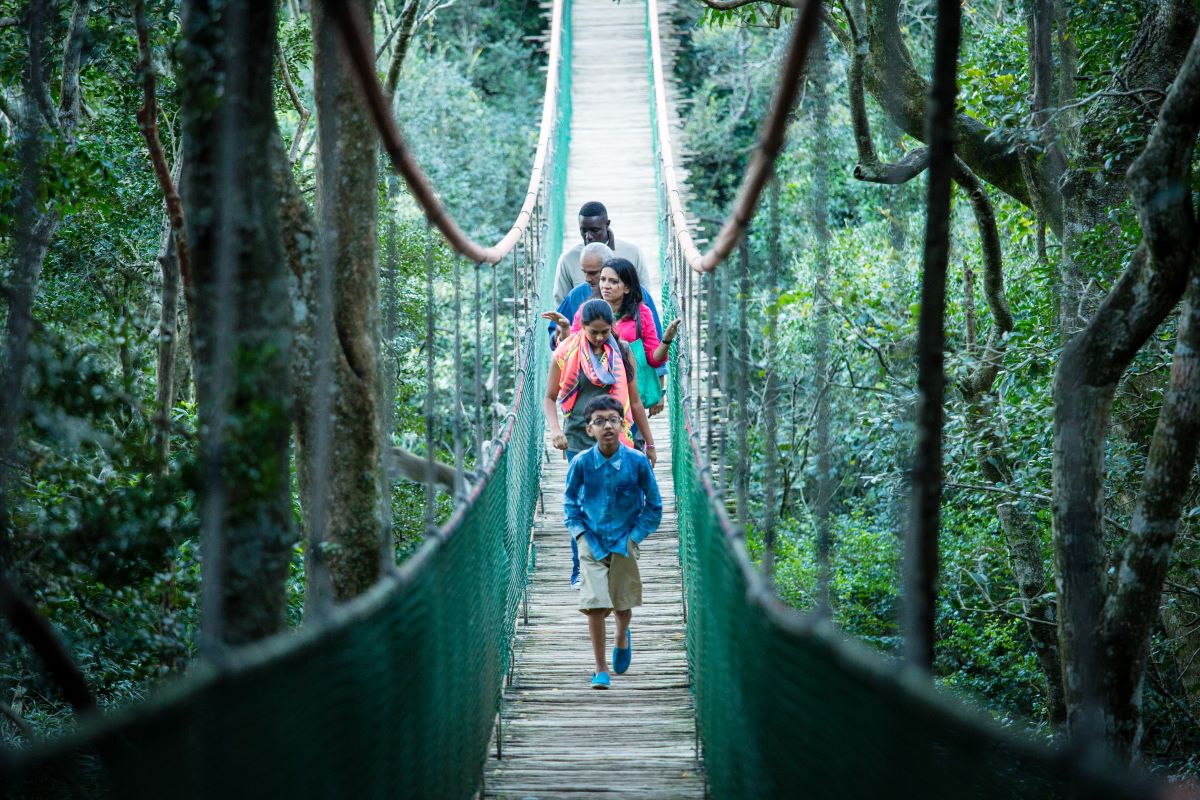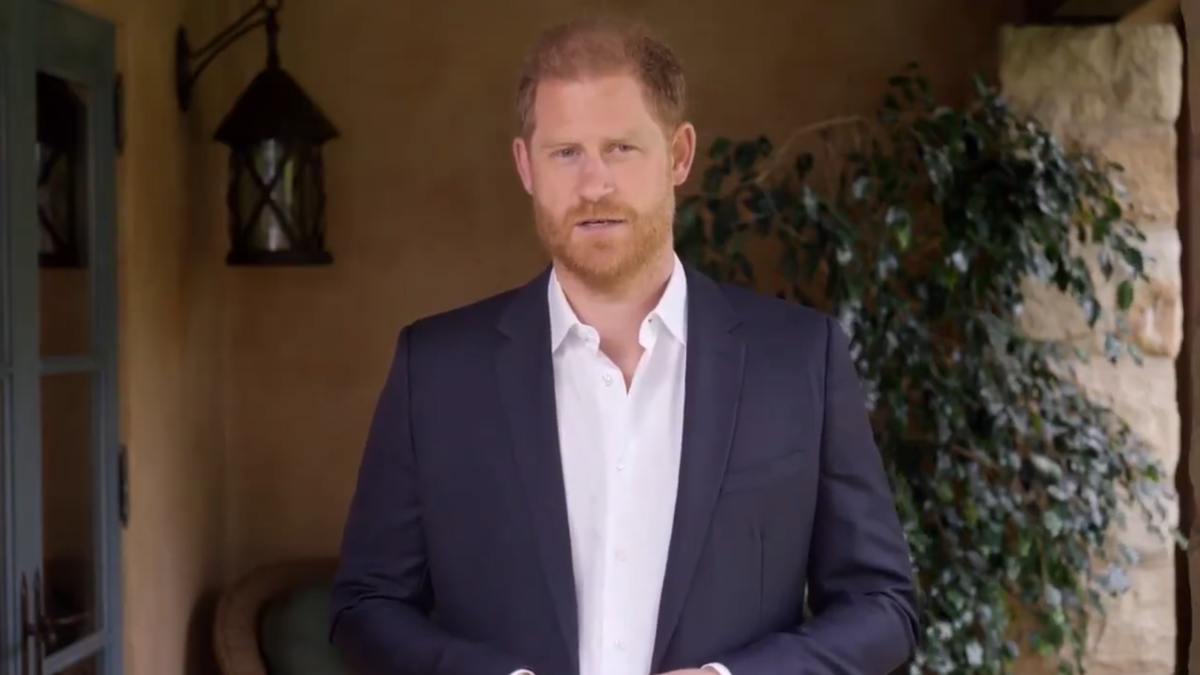Travel Megatrends 2018: The Hotel of the Future Is Everything to Everyone

Skift Take

Skift Megatrends 2018
In January 2018 released our annual travel industry trends forecast, Skift Megatrends 2018. You can read about each of the trends on Skift, or download a copy of our magazine here.This Megatrend is brought to you in partnership with AccorHotels.
At this point, the rise of Airbnb and alternative accommodations has loomed over the hotel industry for nearly a decade and despite the impending threat, the global hotel industry continues to thrive.
But hotels are finally beginning to understand consumers’ growing desires for alternative lodgings — and why they sometimes choose to stay at someone’s apartment instead of in a hotel, whether for the value or for the experience of living like a local. It’s really a difference of experience and, in response, hotels are beginning to double down on the things they already have, the experiences that the Airbnb down the street can’t always easily deliver.
The biggest advantage hotels have today is the ability to deliver a true sense of community: to be the gathering place for locals and guests alike. And more often than not, hotels are delivering that sense of community through mixed-use projects, or spaces that enhance the way we live our daily lives.
While the idea of mixed-use hotel concepts has been around for some time, those projects are increasingly blurring the lines between traditional residential, commercial, retail, and hospitality.
Today, hotels have become converging points for co-living and co-working; living, breathing showrooms for retail brands; and in some instances, immersive entertainment centers all their own. They’re also becoming more fluid, flexible, and adaptable spaces.
“As lines become more fluid and you can use spaces more fluidly, there are new ways for hotels and developers to compete and new ways to use their space to pull individuals in and develop new business models off of that,” said Marcie Merriman, executive director and brand strategy and retail innovation leader at EY, the global professional services and accounting firm.
Co-Everything
In late 2016, Ski ft wrote that “the tenets of ‘co-living’ — that emphasis on collaboration and community — will permeate much of the hotel guest experience in 2017.” It has, and it’s something that will continue into 2018 and beyond.
Whereas mixed-use 1.0 would have commercial offices in the same building as a hotel, but located on different floors and largely separated from the hotel itself, mixed-use 2.0 brings the office inside the hotel so that they’re almost one and the same. You see this especially in hotels that are opening up their lobbies to serve as informal co-working spaces, or those that are adding formal co-working spaces of their own. They’re often a seamless extension of the lobby or main bar area — a place where everyone is encouraged to gather, commune, or “be alone together,” as the saying goes.
Not only that, but hotels also increasingly want guests to really feel like they “live there,” even if it’s only for a few days. In some instances, the lines between purely residential and purely travel are becoming more blurred than ever. This includes Zoku Amsterdam, which is home to a mix of long-term guests or residents, extended-stay guests, and short-stay guests. Another example: Airbnb’s new branded apartment building, in which tenants are encouraged and incentivized to rent out their units on Airbnb to ensure the property has a mix of both travelers and long-term residents.
Hotel as Interactive Showroom
The concept of hotel retail is no longer being limited to the hotel shop. The surge of retail brands entering the hospitality market are not like the ones that preceded them. It used to be that only high-end luxury designer brands like Versace, Fendi, and Ferragamo dared to enter the hotel market.
But today, we’re seeing retail brands like West Elm, Restoration Hardware, Muji, and Shinola opening their own branded hotels. And in doing so, they’re transforming entire hotels into more accessible, interactive showrooms for their brands, and the lifestyles they promise to deliver to guests.
Some brands are also experimenting with new ways of delivering retail experiences. At the Four Seasons Resort Orlando, guests can send a message through the Four Seasons app to request their own hand-selected outfits be delivered straight to their room. It’s on-demand fashion retail in a hospitality setting.
Next-Level Immersion as Entertainment
For proof of the existence of the mega-resort/entertainment complex, one need only look to Las Vegas for some prime examples. But going forward, expect to see hotels that aspire to deliver truly immersive experiences, like the upcoming Star Wars hotel that Disney is building in Orlando.
Another example already in operation is the Legoland Hotel, as HVS president and CEO Stephen Rushmore Jr. told Skift in June: “When you go in the hotel, you feel like you're in a Lego movie. It's like a whole Lego world, and you're totally immersed in a Lego ecosystem. You forget that you're in a hotel. The experience is just so dramatically different. In so many hotels you feel like you're in a hotel or you're in someone's house. This takes you to another place.… It's that type of experience where you go in and you totally forget where you are, your sense of where you are.”
Rushmore added: “Sometimes people just want to escape. They just want to escape from reality. There's no question there's a market for that, but so few hotels really go out and go take the experience that far.”
Fluidity of Spaces
Over time, hotels have evolved to serve a multitude of purposes: sleeping, eating, drinking, socializing, entertaining, and learning, among them. However, what’s changed today is that hoteliers are realizing that the spaces that they are creating can’t just be designed for those specific needs in particular spaces. Guest rooms are no longer just for sleeping. Bars, lobbies, and restaurants aren’t just for eating and drinking or socializing or entertaining.
All of the spaces in a hotel need to be able to transition from one sort of need to the next, seamlessly and without any friction whatsoever. They need to be flexible and adaptable. One of the primary reasons for this is because of technology; the ubiquity of mobile technology has made it that much easier for us to multitask as never before.
Architecture firm Gensler charted this phenomenon in a recent report. The Gensler Experience Index noted how “single-use spaces are becoming obsolete” and “traditional uses of spaces are blurring.”
The survey of 4,000 people identified five different “experience modes”: task, social, discovery, entertainment, and aspiration. Responses showed the best spaces are those that can cater to many — or all — of those modes at a single time. The best design is design that isn’t just beautiful or novel, but also authentic, clear, inspiring, and welcoming.
In short, for the hotel of the future to stand out from the rest, it needs to deliver a truly differentiated experience, and one of the primary ways for hoteliers to do that is through exceptional design. It’s about taking the concept of “mixed use” to another level, to create spaces that encompass a multitude of experiences and needs beyond our traditional concepts of what constitutes accommodations, retail, lifestyle, work, and entertainment.
Download Your Copy of Skift Megatrends 2018

This year's Megatrends are sponsored by our partners at AccorHotels, Allianz Worldwide Partners, Hilton Garden Inn, Intrepid Travel, onefinestay, and Upside.





